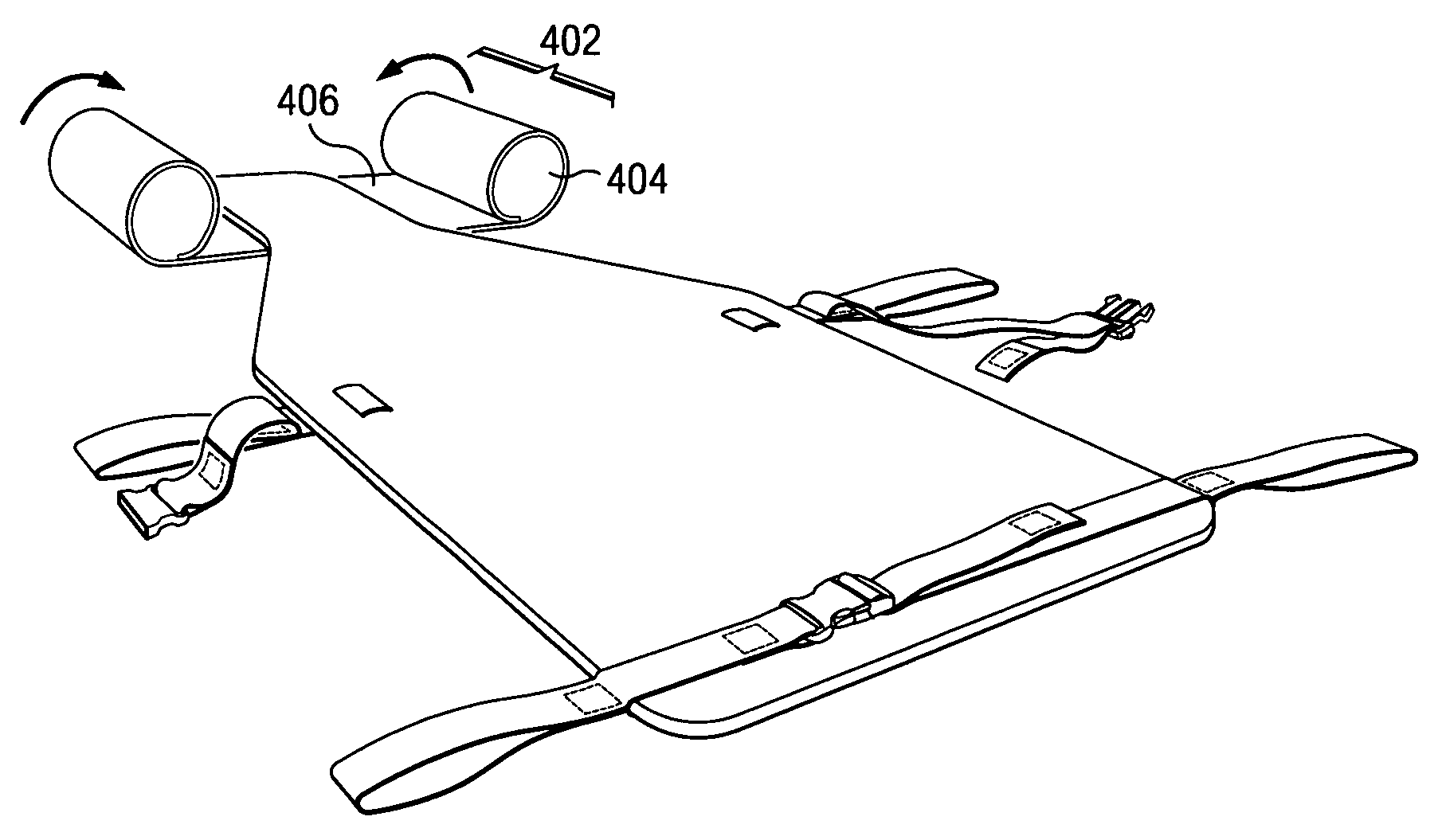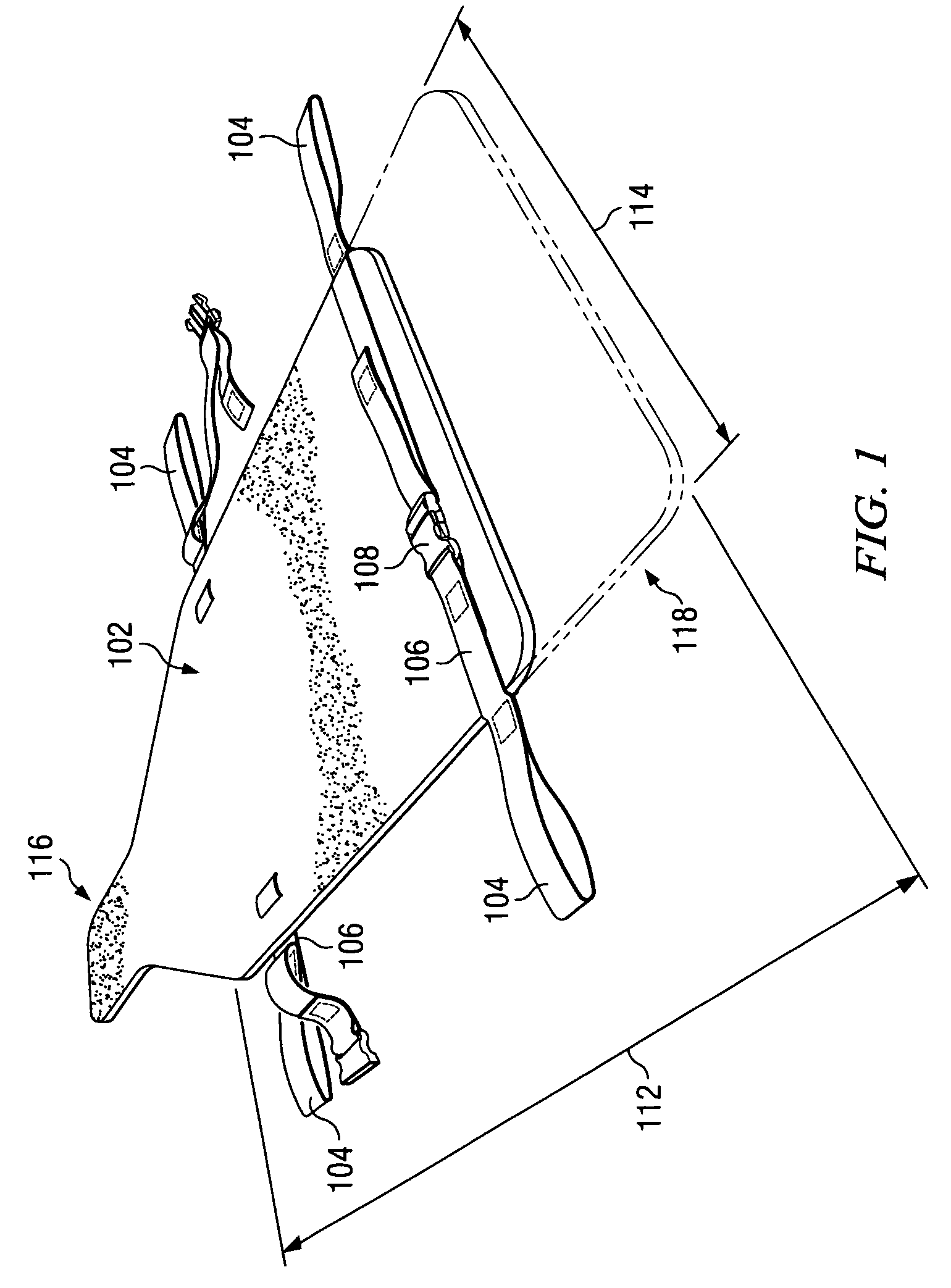Patient assist lift
a technology for lifting and patients, applied in the field of patient assistance lifts, can solve the problems of not being able to secure patients in emergency situations, not having specially designed handles and straps for convenience, and not being able to secure patients in time, so as to reduce or eliminate the risk of additional injury, quickly and easily attach to an injured person
- Summary
- Abstract
- Description
- Claims
- Application Information
AI Technical Summary
Benefits of technology
Problems solved by technology
Method used
Image
Examples
Embodiment Construction
[0052]While the invention is described below with respect to a preferred embodiment, other embodiments are possible. The concepts disclosed herein apply equally to other devices for supporting and facilitating the transportation of an injured person or patient. The invention is described below with reference to the accompanying figures.
[0053]FIG. 1 shows a perspective view of a patient assist lift (PAL) 102 according to a preferred embodiment of the invention. The overall shape of the PAL 102 is roughly that of the silhouette of a human torso. The overall length 112 and width 114 can be varied such that the PAL 102 can ultimately conform to any sized human torso; from a very large adult to the smallest of infants. The length 112 can be further varied to provide a hip supporting portion 118 for the hips of a patient. Depending upon the rescue situation, hip support 118 may or may not be practical. Thus, the PAL 102 can be sized appropriately for any rescue situation and for any sized...
PUM
 Login to View More
Login to View More Abstract
Description
Claims
Application Information
 Login to View More
Login to View More - R&D Engineer
- R&D Manager
- IP Professional
- Industry Leading Data Capabilities
- Powerful AI technology
- Patent DNA Extraction
Browse by: Latest US Patents, China's latest patents, Technical Efficacy Thesaurus, Application Domain, Technology Topic, Popular Technical Reports.
© 2024 PatSnap. All rights reserved.Legal|Privacy policy|Modern Slavery Act Transparency Statement|Sitemap|About US| Contact US: help@patsnap.com










